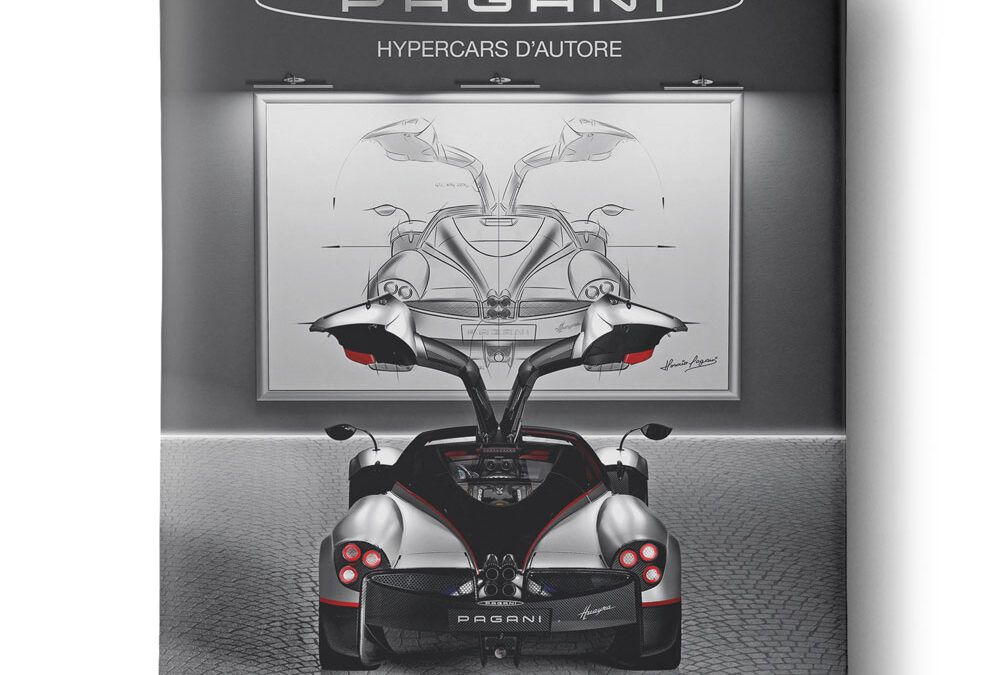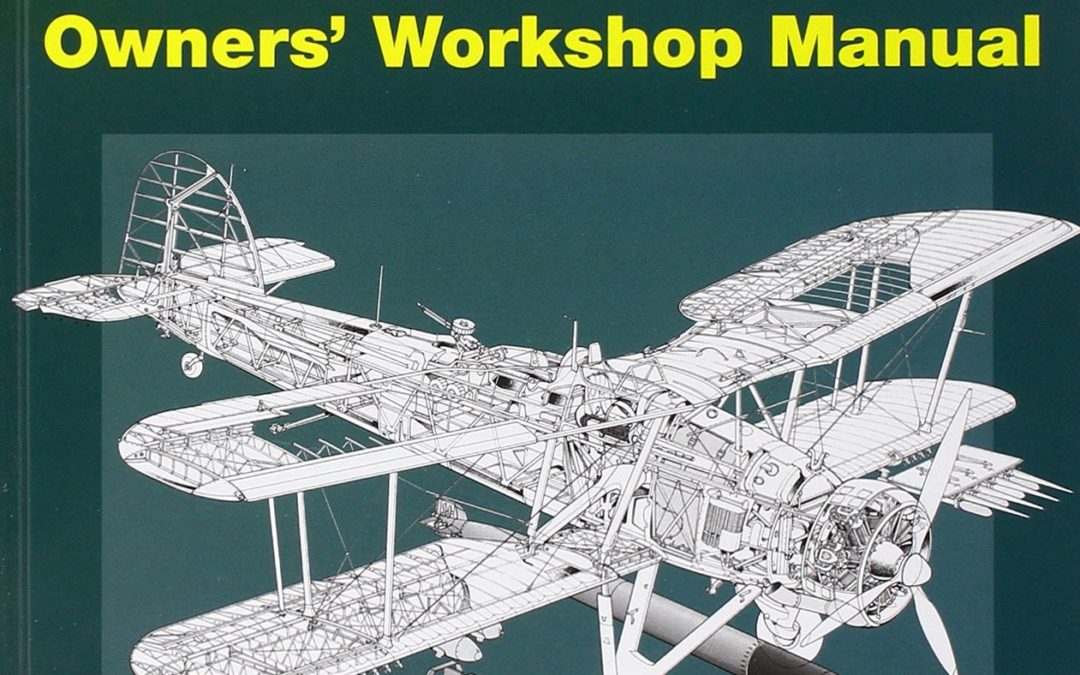
Affectionately known as the ‘Stringbag’ by its crews, the Fairey Swordfish biplane torpedo bomber was obsolete by 1939, but it still achieved some spectacular successes during the Second World War, including the famous crippling of the German battleship Bismarck in 1941. The centrepiece of this manual is Swordfish Mk II, LS326, operated by the Royal Navy Historic Flight from RNAS Yeovilton. The author and Haynes have been given unique access to this rare aircraft, which is one of only two airworthy examples in the world.
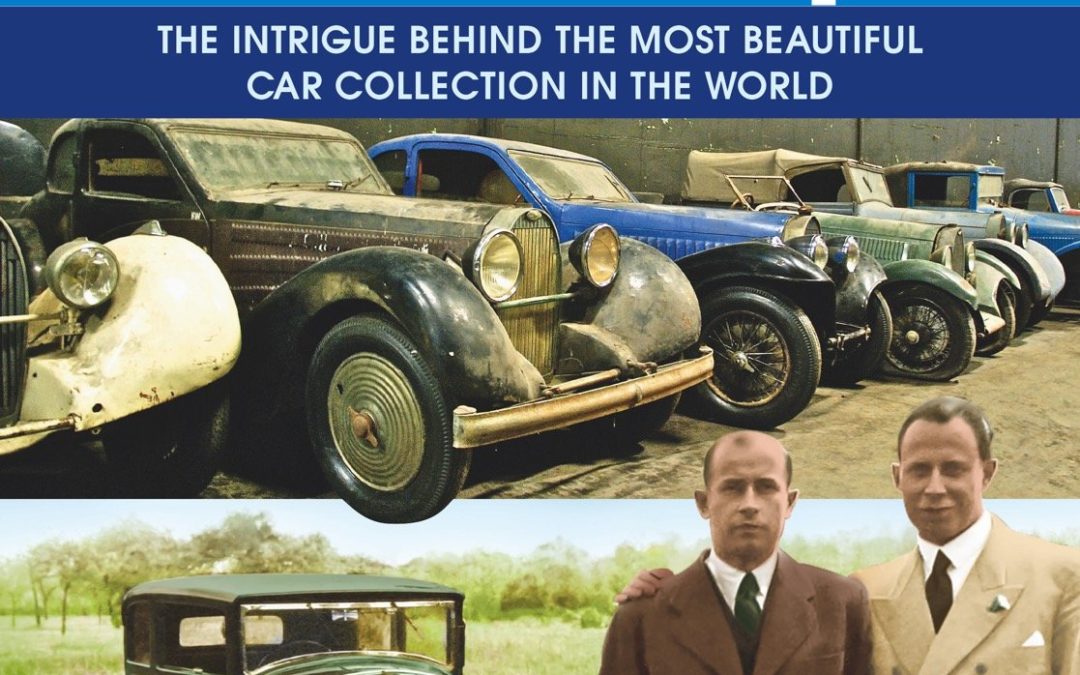
This fabulous collection of cars was brought together by two French brothers, Hans & Fritz Schlumpf, and consists of hundreds of the most beautiful cars ever produced. The ‘Schlumpf affair’ is perhaps one of the most famous stories in the car collectors world, covered extensively by the media in the mid-1970s, when the collection was seized by the trade unions and later by the French government. The Schlumpf brothers were accused of fraudulent actions to obtain their collection — but following extensive research by the authors of this book, the true story behind the collection is revealed. Ard and Arnoud op Weegh spent many years investigating the Schlumpf affair, and discovered many previously unpublished documents which prove that the Schlumpf brothers have been wrongly accused over the years. This book is written to tell the true story behind the collection, and also to rehabilitate the Schlumpf family name.
The book is beautifully illustrated with some rare photographs, and features many of the beautiful cars that make up the Schlumpf collection.

Dubbed ‘Warthog’ – or just ‘Hog’ – by those who fly and maintain it, the Fairchild Republic A-10 Thunderbolt II is the world’s undisputed close air support attack jet. As tough as it is ugly, it has built a fearsome reputation as a tank buster and infantry killer in conflicts around the globe, and its GAU-8 Avenger 30mm cannon strikes fear into the hearts of all unlucky enough to be on the wrong side of it.he A-10 was clutched from the jaws of retirement by the 1991 Gulf War. At the time of the conflict, the United States Air Force was making plans to shed it’s A-10 fleet, citing obsolescence and redundancy. As the ensuing conflict showed, nothing could have been further from the truth, and no other airframe could have provided the US and Coalition commanders with the sort of forward air control, close air support, combat search and rescue, and tank busting capabilities that the Hog did. Since then the A-10 has delivered capabilities to battlefield commanders in the Balkans (1990s), Afghanistan (2001 onwards) and the second Gulf War (2003 onwards), and Libya (2011). A-10s have flown around 11 per cent of Operation Inherent Resolve sorties (striking IS targets in Iraq) since combat operations began in August 2014.
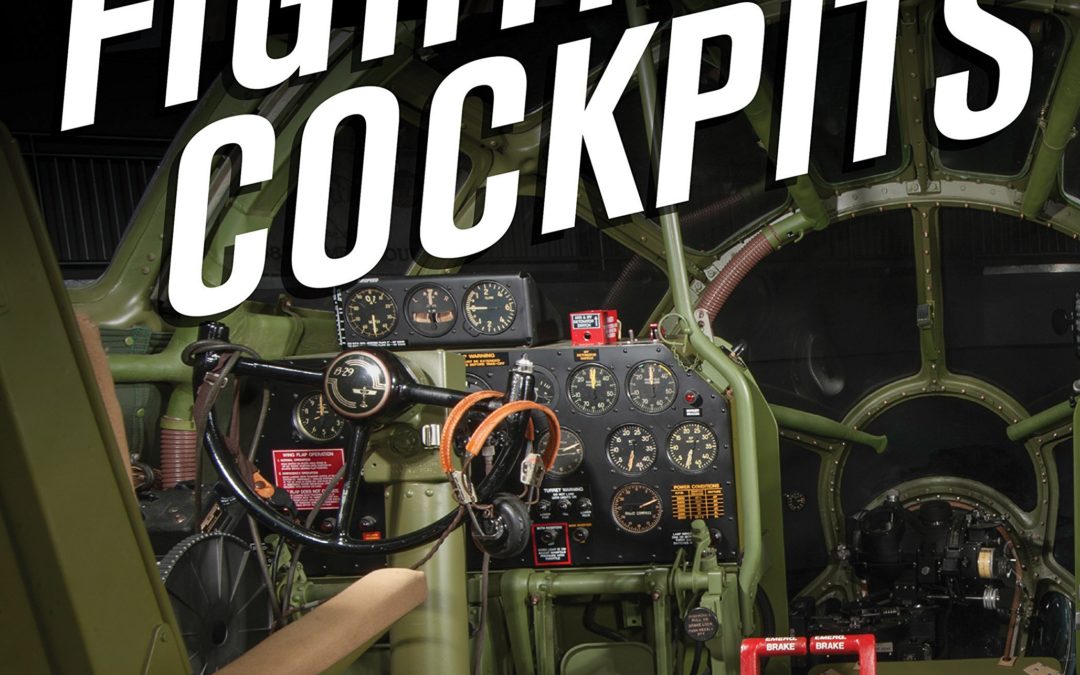
What was it like to sit in the pilot’s seat and take control of a P-51 Mustang in World War II? What about an F-14 Tomcat at the height of the Cold War? Or a Lockheed Martin F-22 Raptor today? The cockpits of these fighter and bomber aircraft are revealed in Fighting Cockpits.
Showcasing more than 50 of the world’s most famous combat cockpits from early World War I aircraft to present-day fighters, this book includes more than 200 rich color photos from photographer Dan Patterson, as well as detailed history about combat cockpit development from aviation expert and historian Donald Nijboer.
Presented in large-format, you’ll be blown away by studio shot spreads of views from the cockpits, vintage photographs of the aircrafts in action, and modern photography of surviving crafts. This book will complete any history buff or aviation enthusiast’s library.
Aircraft include:
Wind in the Wires: Nieuport 28, Royal Aircraft Factory S.E.5, Bristol F.2, Fokker Dr.I, Sopwith Camel, Sopwith Triplane, AEG G.IV, SPAD VII, Halberstadt CL.IV, Fokker D.VII
The Rise of the Monoplane: Martin MB-2, Hawker Hind, Fiat CR.32, Boeing P-26 Peashooter, Curtiss F9C, Sparrowhawk, Vought SB2U Vindicator, Westland Lysander, PZL P.11
World War II: Supermarine Spitfire, Messerschmitt Bf 109, Republic P-47 Thunderbolt, North American P-51 Mustang, Handley Page Halifax, Vickers Wellington, Focke-Wulf Fw 190 Wurger, Fairey Firefly, Fiat CR.42, Ilyushin Il-2 Sturmovik, Heinkel He 219 Uhu, Kawasaki Ki-45 Toryu, Curtiss SB2C Helldiver, Northrop P-61 Black Widow, Boeing B-17 Flying Fortress, Boeing B-29 Superfortress, Dornier Do 335 Pfeil, Messerschmitt Me 262 Schwalbe, Arado Ar 234 Blitz
Cold War to the Present: North American F-86 Sabre, Boeing B-52 Stratofortress, Grumman A-6 Intruder, General Dynamics F-111 Aardvark, Hawker Siddeley Harrier, McDonnell Douglas/Boeing F-15 Eagle, Grumman F-14 Tomcat, Fairchild Republic A-10 Thunderbolt II, General Dynamics/Lockheed Martin F-16 Fighting Falcon, Mikoyan MiG-29, Rockwell B-1 Lancer, Lockheed Martin F-117 Nighthawk, Lockheed Martin F-22 Raptor, Lockheed Martin F-35 Lightning II Joint Strike Fighter

Welcome to Cuba’s automotive time capsule, filled with classic cars.
The story of how Cuba came to be trapped in automotive time is a fascinating one. For decades, the island country had enjoyed healthy tourism trade and American outpost status, and by the 1950s it had the highest per capita automotive purchasing of any Latin American country – its middle class ensured an interesting variety of vehicles plying the roads. But when Cuba fell to communist rebels in 1959, so ended the inflow of new cars. Since then, trade embargo forced Cuba’s car enthusiasts to develop a unique and insular culture, one marked by great creativity, such as:
Keeping a car alive with no opportunity to acquire replacement parts
Customizing a car with no access to aftermarket parts
Drag racing with no drag strip
In many ways, Cuba is an automotive time warp, where the newest car is a 1959 Chevy or perhaps one of the Soviet Ladas. Cuba’s Car Culture offers an inside look at a unique car culture, populated with cars that have been cut off from the world so long that they’ve morphed into something else in the spirit of automotive survival.
Authors Tom Cotter and Bill Warner (founder of the Amelia Island Concours) take readers of Cuba’s Car Culture on a whirlwind tour of all things automotive, beginning with Cuba’s pre-Castro car and racing history and bringing us up to today’s lost collector cars, street racing, and the challenges of keeping decades-old cars on the road. The book is illustrated throughout with rare historical photos as well as contemporary photos of Cuba’s current car scene. For anyone who enjoys classic cars, from old Chevy Bel-Airs to Studebakers to Ford Fairlanes, a cruise around Cuba will make you feel like a kid in a candy store.
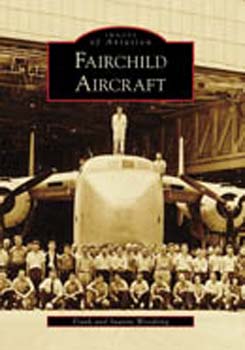
When Orville Wright made the first successful flight of an airplane at Kitty Hawk, North Carolina, on December 17, 1903, no one could have envisioned the impact that the historic occasion would have on Hagerstown, Maryland, and the tri-state area of Maryland, Pennsylvania, and West Virginia. When Sherman M. Fairchild bought controlling interest in Hagerstown’s Kreider-Reisner Aircraft in 1929, the stage was set for the newly formed Fairchild Aircraft to become a major contributor to the country’s World War II efforts. In 1939, the company was awarded a contract to build 270 PT-19 trainers for the U.S. Army Air Corps. By the spring of 1944, Fairchild had manufactured more than 5,000 of the primary trainers, which became synonymous with the city of Hagerstown. When asked by the military to “put wings on a railroad boxcar,” Fairchild responded with various cargo aircraft including the C-82, the C-119, and the C-123. Fairchild’s contribution to the world of aviation unofficially ended in March 1984 with the delivery of the last of the A-10s contracted by the U.S. Air Force. Over the course of its history in Hagerstown, Fairchild employed more than 50,000 men and women in the manufacture of military and civilian aircraft.
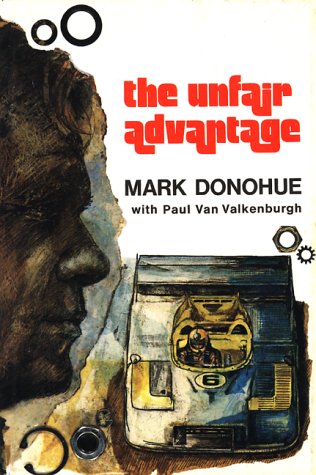
In 1974, Mark Donohue took a year off from driving at the height of his racing career to write “The Unfair Advantage,” a candid and revealing book about his journey through the world of auto racing — from amateur SCCA races in his own ’57 Corvette to winning the Indy 500 in Roger Penske’s McLaren M16. This new edition contains over 60 additional photographs and comments from people who worked and raced with Donohue during the 1960s and early 1970s.

Grand Prix racing in the late 1920s through the early 1930s was “owned” by the powerful, state-backed Italian teams with drivers like Nuvolari and Varzi, but by the end of the Thirties, the Germans dominated. Driving Forces by Peter Stevenson tells the human story of the men, their women, and their machines that made the German dominance possible. It is the classic story of daring individuals facing the ultimate challenge both physically and morally as these racing drivers drove under the Nazi swastika, but for themselves.
Driving Forces focuses on the lives of two of the world’s greatest racing drivers: Rudolph “Rudi the Rain Master” Caracciola and Bernd Rosemeyer. The cast of characters reads like the European roll call of the Grand Prix greats: Louis Chiron (France), Achille Varzi (Italy), Giuseppe Campari (Italy), Dick Seaman (Great Britain), Hans Stuck (Germany), and, the greatest of them all, the Maestro Tazio Nuvolari (Italy). Peter Stevenson follows the career of Rudi Caracciola from his youthful “great escape” from the occupying Belgian forces to his first ride with Mercedes and then on to greatness as the top driver for that German team. Caracciola’s life is intertwined with that of his greatest rival Bernd Rosemeyer of the Auto Union team. Rosemeyer’s story is a tragic one of a youthful, talented, and well-loved racer whose love affair with racing and Germany’s outstanding aviatrix, Elly Beinhorn (the Amelia Earhart of Germany), led to his death in 1938.
Driving Forces is also the story of the rivalry between Mercedes Benz and Auto Union, led by the brilliant designs of Dr. Porsche, for the Grand Prix championship of Germany and the world. The ultra-sophisticated supercharged machines of Mercedes, Germany’s premier automaker, faced Porsche’s ingeniously designed rear-engined V-12 and V-16 behemoths. Capable of between 500 and 600 horsepower, the cars easily reached speeds of over 200 miles an hour and in 1938, at speed record attempts on the Autobahn in Germany, the German cars reached speeds of over 270 miles per hour on a regular paved road.
But this is not merely a story about race cars. It is primarily a tale of individual courage – the drivers and their wives and lovers who faced death on and off the race course, for this was a time in Europe when fascism was on the rise sweeping up a continent and then the world. These racing drivers and their loved ones dealt with the risks of racing such powerful machines and of dealing with one of history’s most terrifying dictators – Adolf Hitler. That they survived either of these challenges is a testament to their courage and fortitude – some, however, did not. Driving Forces is the story of those challenges, those successes, and those losses. It is a human story, brilliantly told against the exciting background of international Grand Prix racing and the growing maelstrom of the Third Reich.

All the way from inception to its modern legacy, author Barry Edwards explores the many inventions of Peel Engineering and celebrates the ingenuity of one of its prominent inventors: Cyril Cannell. The P50, the world’s smallest production car. is only one of the many designs that have made Peel Engineering’s story so extraordinary. This book looks at the development of ideas and inventions, such as bike fairings, Cannell’s patented monorail, and Peel Engineering’s innovative use of fibreglass, Readers will also discover some first- hand accounts of Peel P50 and Trident owners’ adventures in these wonderful cars.

A nostalgic and celebratory look back at one hundred years of passenger flight, featuring full-color reproductions of route maps and posters from the world’s most iconic airlines, from the author of bestselling cult classic Transit Maps of the World.
In this gorgeously illustrated collection of airline route maps, Mark Ovenden and Maxwell Roberts look to the skies and transport readers to another time. Hundreds of images span a century of passenger flight, from the rudimentary trajectory of routes to the most intricately detailed birds-eye views of the land to be flown over. Advertisements for the first scheduled commercial passenger flights featured only a few destinations, with stunning views of the countryside and graphics of biplanes. As aviation took off, speed and mileage were trumpeted on bold posters featuring busy routes. Major airlines produced highly stylized illustrations of their global presence, establishing now-classic brands. With trendy and forward-looking designs, cartographers celebrated the coming together of different cultures and made the earth look ever smaller.
Eventually, fleets got bigger and routes multiplied, and graphic designers have found creative new ways to display huge amounts of information. Airline hubs bring their own cultural mark and advertise their plentiful destination options. Innovative maps depict our busy world with webs of overlapping routes and networks of low-cost city-to-city hopping. But though flying has become more commonplace, Ovenden and Roberts remind us that early air travel was a glamorous affair for good reason. Airline Maps is a celebration of graphic design, cartographic skills and clever marketing, and a visual feast that reminds us to enjoy the journey as much as the destination.
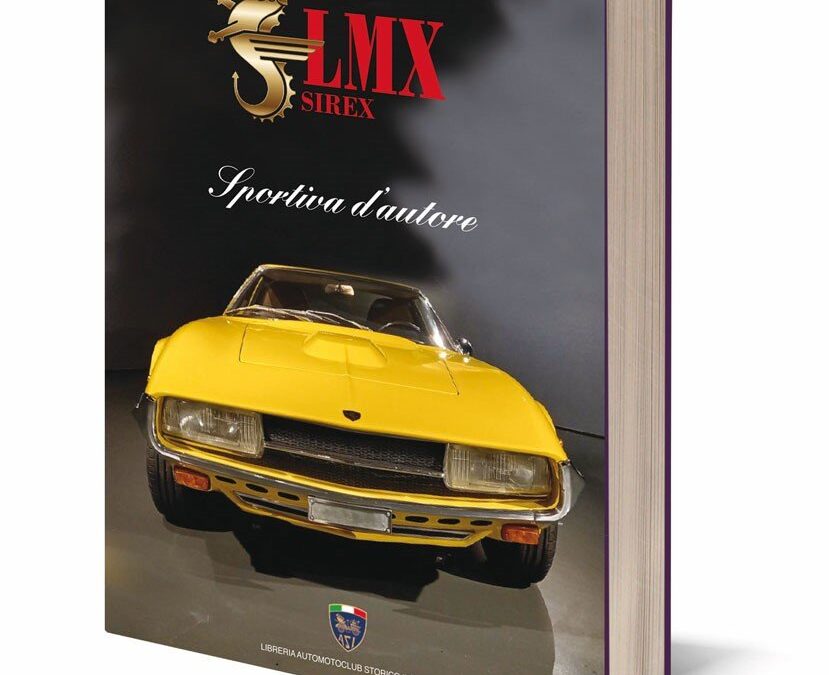
A very rare, inexplicably forgotten car, which in these pages will be possible to rediscover through unpublished documents and images, the result of over forty years of research, so as to decipher the dreams, aspirations and ambitions of men involved.Designers and craftsmen at the forefront of the industry at the time, which with their extraordinary professionalism and creativity, gave birth to cars that contributed to the myth that is the Italian car in the world. Designed in Milan and built in Turin, LMX is an Italian granturismo, daughter of extraordinary characters, who gave birth to a car characterized by innovative technological solutions, incorporating new stylistic trends from America and Italy, giving the world lesson in balance and elegance. An entrepreneurial affair born close to 1968 with great ambitions and characterized by genius and courage but which, like other Italian car productions, was penalized by insufficient economic resources.
Text in Italian and English
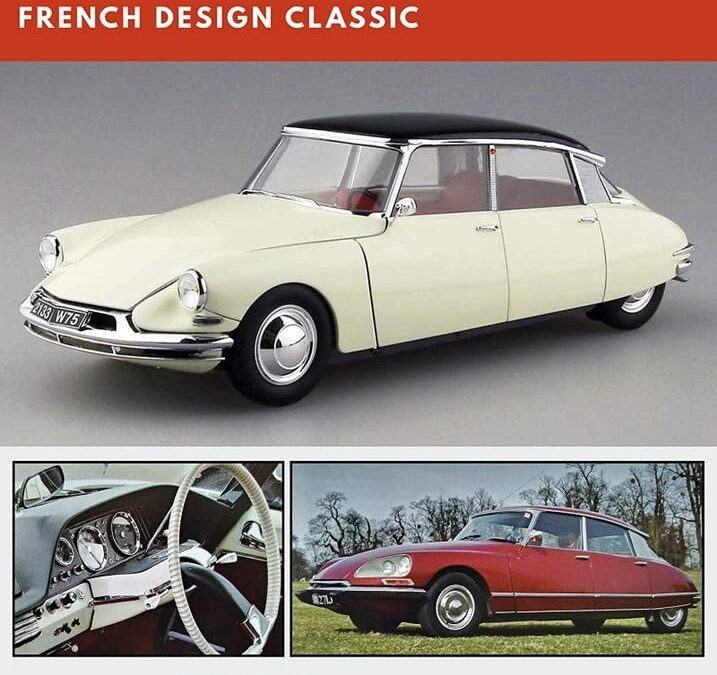
Launched in 1955 yet looking like a sci-fi design proposal for a future then undreamed of, Flaminio Bertoni’s ellipsoid sculpture with wheels that was the Citroën DS stunned the world.
There was a near riot at the 1955 Paris Motor Show launch of the car, orders flooded in for this, the new ‘big Citroën’ (a Voiture a Grande Diffusion or VGD) as the car that replaced the legendary Traction Avant range.
The term ‘DS’ stems from two Citroën parts of nomenclature – the type of engine used as the 11D, (D) and the special hemispherical design of the cylinder head as ‘Culasse Special’ (S): DS out of ‘Deesse’ or Goddess, was a more popular myth of ‘ DS’ origination, but an erroneous one.
But it was not just the car’s aerodynamically advanced body shape (Cd. 0.37) that framed the genius of the DS: hydro pneumatic self-levelling suspension, advanced plastics and synthetics for the construction of the roof and dashboard/fascia, and amazing road holding and cabin comfort were some of this car’s highlights.
Only the lack of an advanced new engine was deemed a missed opportunity. In fact Citroën had created a new engine for the car but lacked the resources to produce it in time for 1955.
DS was a major moment in the history of car design, one so advanced that it would take other auto manufacturers years to embrace. Yet DS in its ‘aero’ design was the precursor to today’s low drag cars of curved form.
Manufactured worldwide, used by presidents, leaders, diplomats, farmers and many types of people, the DS redefined Citroën, its engineering and design language, and its brand, for decades to come.
Prone to rust, not the safest car in the world, and always lacking a smoother powerplant, the DS still became an icon of car design.
Reshaped with a new nose and faired-in headlamps in 1967, DS remained in production until 1975.
Across its life DS spawned an estate car variant as the ‘Safari’, a range of limousines, two-door convertibles, and even coach-built coupes and rally specials.
This car was a product design that became an article of social science – it was that famous and it defined a European design movement upon a global stage then packed with ‘me too’ copyist designs.
The DS or ‘Goddess’ as it was tagged, was a tear-drop shaped act of French confidence in a world of the regurgitation of the known. Some argue that DS and its effect has never been surpassed.
This new value-for-money book provides innovative access to the design, history, and modeling of the revolutionary DS – one of the true ‘greats’ of motoring history and, a contemporary classic car of huge popularity.
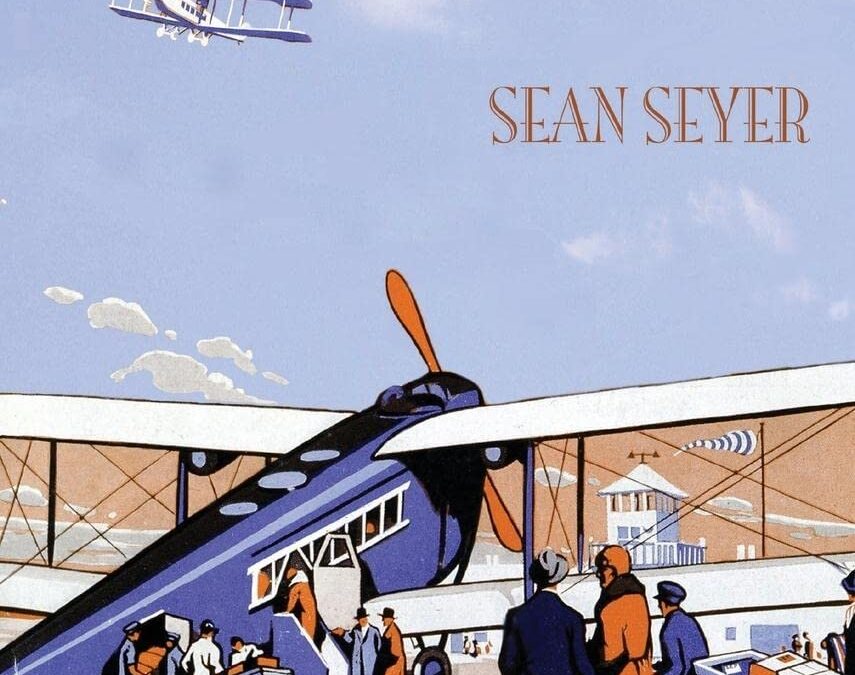
A pathbreaking history of the regulatory foundations of America’s twentieth-century aerial preeminence.
Today, the federal government possesses unparalleled authority over the atmosphere of the United States. Yet when the Wright Brothers inaugurated the air age on December 17, 1903, the sky was an unregulated frontier. As increasing numbers of aircraft threatened public safety in subsequent decades and World War I accentuated national security concerns about aviation, the need for government intervention became increasingly apparent. But where did authority over the airplane reside within America’s federalist system? And what should US policy look like for a device that could readily travel over physical barriers and political borders?
In Sovereign Skies, Sean Seyer provides a radically new understanding of the origins of American aviation policy in the first decades of the twentieth century. Drawing on the concept of mental models from cognitive science, regime theory from political science, and extensive archival sources, Seyer situates the development, spread, and institutionalization of a distinct American regulatory idea within its proper international context. He illustrates how a relatively small group of bureaucrats, military officers, industry leaders, and engineers drew upon previous regulatory schemes and international principles in their struggle to define government’s relationship to the airplane. In so doing, he challenges the current domestic-centered narrative within the literature and delineates the central role of the airplane in the reinterpretation of federal power under the commerce clause.
By placing the origins of aviation policy within a broader transnational context, Sovereign Skies highlights the influence of global regimes on US policy and demonstrates the need for continued engagement in world affairs. Filling a major gap in the historiography of aviation, it will be of interest to readers of aviation, diplomatic, and legal history, as well as regulatory policy and American political development.
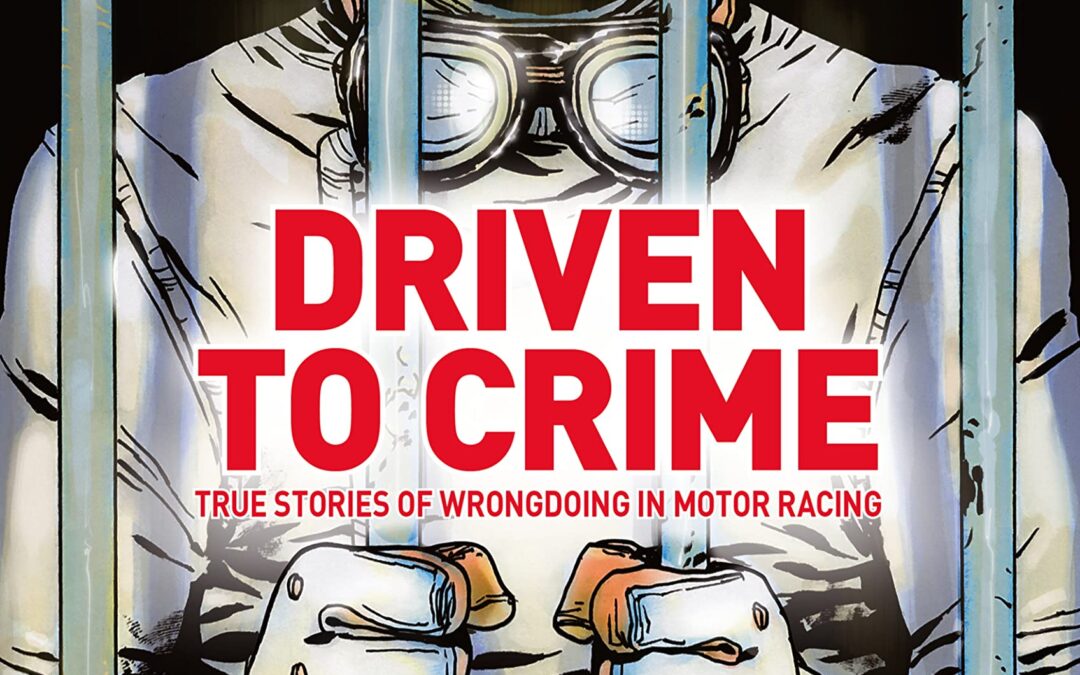
People lie, cheat, steal and even kill for a variety of reasons, one of which is to go motor racing, a particularly expensive and egotistical sport. This intriguing book, the result of years of research, encompasses not just those who have been ‘driven to crime’ in order to pay for their sport but also characters within motor racing who have been involved in wrongdoing, sometimes through no fault of their own.
Over 60 true stories cover webs of deceit and numerous crimes including drug trafficking, corruption, embezzlement, robbery, fraud, murder and money laundering. The author investigates misdemeanours at all levels, from drivers, designers and mechanics to team owners, entrants and sponsors.
- Stories of motorsport chicanery from all over the world, including…
- Fraud: Southern Organs (lay preachers who faked suicide and hid on a remote Scottish island); Jerry Dominelli (a Ponzi scheme that funded top-level racing Porsches); Jean-Pierre Van Rossem (self-styled stock-market guru who bankrolled an F1 team); Dominic Chappell (serial bankrupt racer brought down after purchasing a British department store); David Thieme (the Lotus sponsor who vanished).
- Murder: David Blakely (the driver killed by his lover Ruth Ellis); Franco Ambrosio (F1 sponsor of Shadow and Arrows); Elmer George (American racer who married into Indy ‘royalty’); Ricardo Londoño-Bridge (Colombia’s first F1 driver); Mickey Thompson (1960s American drag-racing icon); Nick Whiting (casualty of the biggest gold bullion heist in British history).
- Swindles: James Munroe (accounts manager who embezzled his way to a racing McLaren F1 GTR); Lord Brocket (jailed for staging the theft of his classic cars, including Ferraris); Andrea Harkness (stripper who ripped off NASCAR).
- Drugs: Ian Burgess (sometime British F1 racer); Randy Lanier (drug-smuggling IMSA champion); John Paul Sr and Jr (talented son dragged into a racing father’s drug-running); Vic Lee (super-successful team owner with a dodgy transporter); the Whittington brothers (more misdeeds in IMSA circles).
- Other misdemeanours: Roy James (Great Train Robbery getaway driver); Bertrand Gachot (jailed after road rage in London); Juan Manuel Fangio (kidnapped by Cuban rebels in 1958); Colin Chapman (the unresolved ‘DeLorean Affair’); ‘Spygate’ (Ferrari design secrets passed to McLaren).
This book will appeal not only to motor racing enthusiasts and cognoscenti on both sides of the Atlantic but also to anyone who enjoys reading about true crimes.

This wonderfully illustrated, up-to-date guide to the natural, cultural, and historical gems hidden just off the legendary Route 66 outlines 30 trips for curious travelers.
Route 66 is arguably the
world’s most famous highway (more than 60% of Route 66 adventurers are from overseas!)—its motels, diners, and roadside attractions comprising a time capsule of America’s love affair with the automobile. While many of the road’s
iconic attractions have disappeared with time (along with large stretches of the road itself), others are as enduring as ever.
In this completely revised and updated version of The Backroads of Route 66, author and Route 66 expert Jim Hinckley is your guide from the lowlands of the American Plains to the high plateaus of New Mexico and Arizona, from the Great Lakes to the mighty Pacific Ocean, and through major metropolises and remote country towns.
But rather than take the road oft traveled and the sites most photographed, Hinckley encourages you to branch off the Mother Road and discover the hidden gems beyond today’s familiar motels and tourist traps—quaint frontier communities that date to westward expansion; the legacy of native cultures; and the awe-inspiring natural wonders that have graced these lands since time immemorial. There to be explored within a few hours’ drive from the path of Route 66, discover:
- Outdoor attractions
- Museums
- Historic sites
- And much more
The thirty trips in The Backroads of Route 66 offer new travel opportunities for you and the thousands of road-trippers who follow this legendary route, looking for something more.
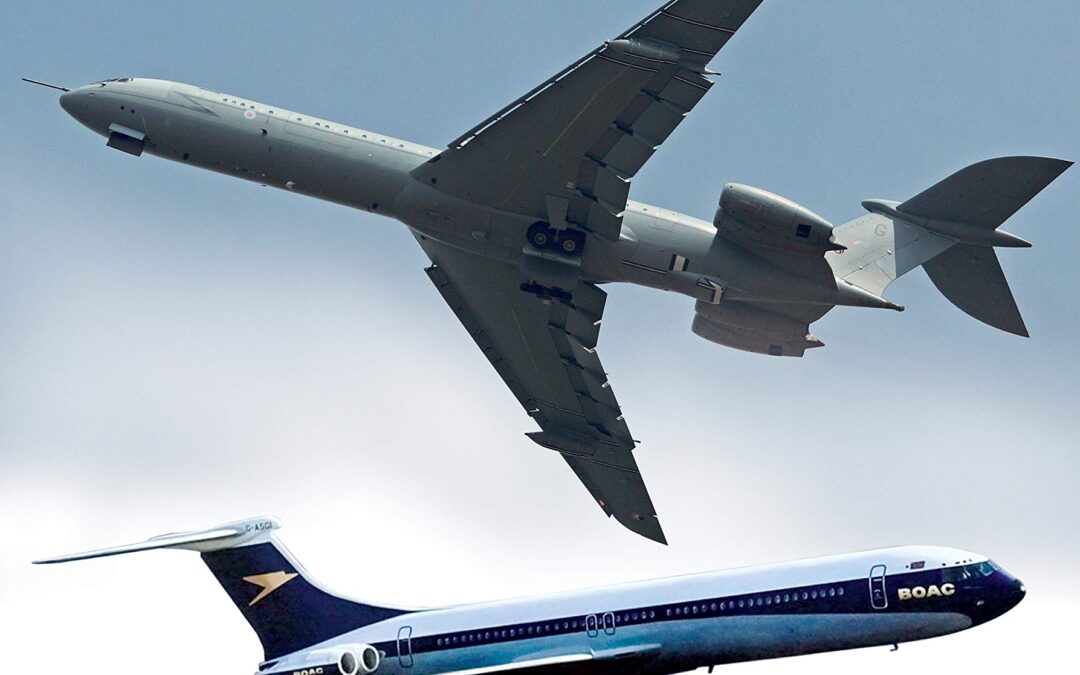
Designed and manufactured by the men who would make Concorde, the Rolls-Royce powered Vickers VC10, and its larger variant, the Super VC10, represented the ultimate in 1960s subsonic airliners. The VC10 was Britain’s answer to the Boeing 707 and the Douglas DC-8.
The VC10 was a second-generation jetliner designed in the 1960s and manufactured into the 1970s. It incorporated advanced engineering, new aerodynamics, and design features, to produce a swept, sculpted machine easily identifiable by its high T-tail design and rear-engine configuration.
The VC10 could take off in a very short distance, climb more steeply and land at slower speed than its rivals the Boeing 707 and Douglas DC-8. These were vital safety benefits in the early years of the jet age. At one stage, the Super VC10 was the biggest airliner made in Europe and the fastest in the world.
On entry into service, both the VC10 and the longer Super VC10 carved out a niche with passengers who enjoyed the speed, silence and elegance of the airliner. Pilots, meanwhile, loved its ease of flying and extra power. Yet the VC10 project was embroiled in political and corporate machinations across many years and more than one government. BOAC got what they asked for but went on to criticize the VC10 for not being a 707 – which was a different beast entirely. Questions were asked in parliament and the whole story was enmeshed in a political and corporate affair that signified the end of British big airliner production. Yet the men who made the VC10 also went on to design and build Concorde. Many VC10 pilots became Concorde pilots.
In service until the 1980s with British Airways, and until 2013 with the RAF, the VC10 became a British icon and a national hero, one only eclipsed by Concorde. It remains an enthusiast’s hero.
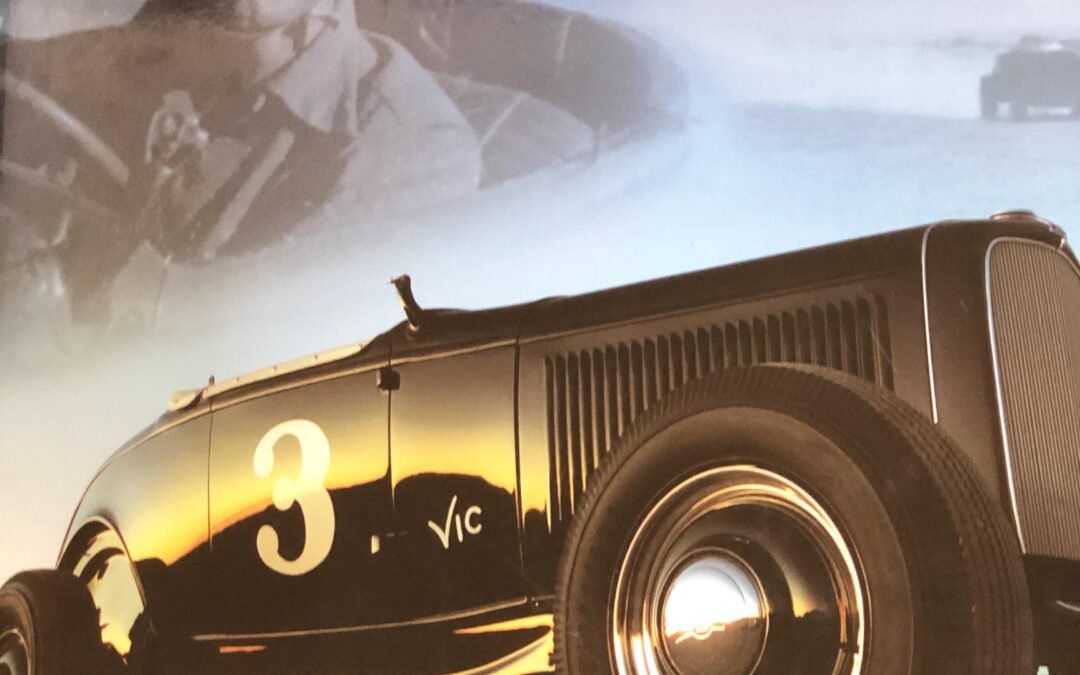
SIGNED to Phil Hill by Vic Edelbrock and Tom Madigan
Tom Madigan, with foreword by Benny Parson, NASCAR champion. The Edelbrock Corporation emerged from a young mechanic’s dream in Southern California during the earliest years of the American love affair with the automobile. One of the central figures of the hot rod culture that began before World War II and blossomed after the war, Vic Edelbrock, Sr. built his company around a simple philosophy: never overextend yourself, and never put your name on a product that hasn’t been tested and proven true. When Vic Edelbrock, Jr. took over after his father’s death, he stayed true to the family philosophy while incorporating progressive marketing plans to grow the company into a corporate giant. It is the last family owned automobile aftermarket company in the industry.Edelbrock Made in USA is the story of the company’s growth from a simple shop at the rear of a gas station to an American institution. It is at the heart of the history of the earliest drag racers and land speed racers, it is woven into the early days of NASCAR, and it flourishes today in the cars owned by enthusiasts and ordinary drivers across America who boast Edelbrock equipment. It is the story of a company whose influence not only helped shape automotive performance, but also led the automotive aftermarket industry in addressing and conforming to the clean air and safety regulations that have emerged over the past 35 years. And it is the story of an iconic family business that has preserved its values and its spirit of independence, creativity, philanthropy, and fun over three generations.
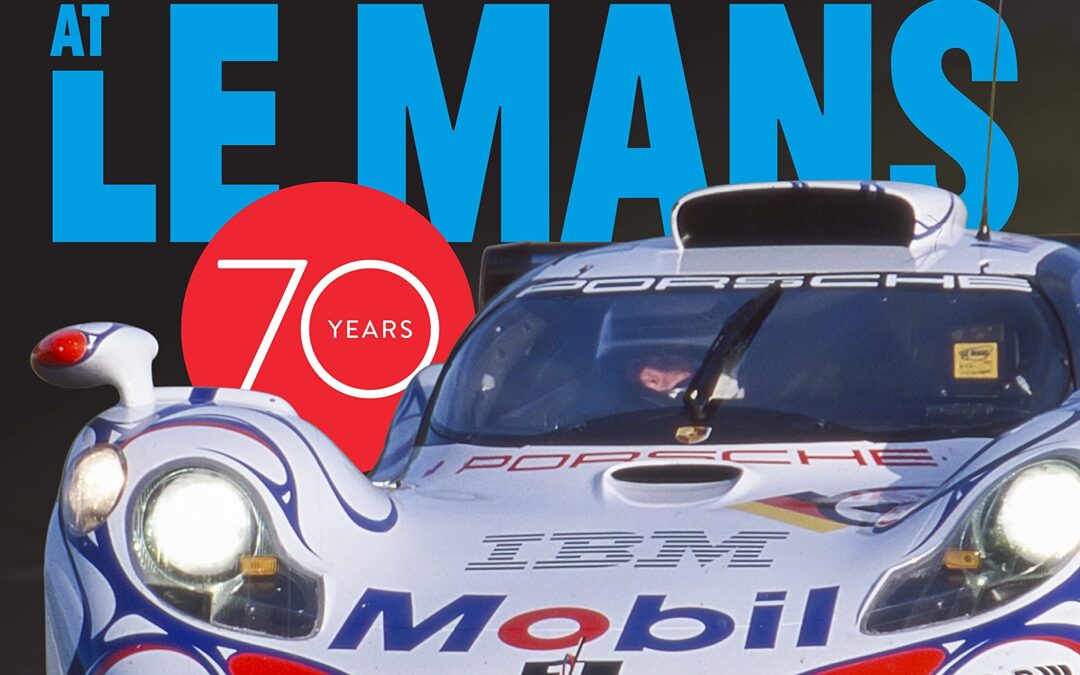
Packed with photography, narrative, and race results, Porsche at Le Mans is the definitive illustrated history of Porsche’s 70 years of competition in the world’s greatest motor race.
Porsche’s first visit to Le Mans came in 1951 with a streamlined 356 model, complete with aerodynamic wheel fairings. In a precursor to the reputation Porsche would establish over the next seven decades at the famous endurance race, the 356 ran like clockwork, beating the coveted record for the shortest time spent in the pits. Since that memorable debut, Porsche has won outright at Le Mans 19 times, more than any other marque, with a record series of seven consecutive victories from 1981 to 1987. This beautifully designed and extensively illustrated book is your definitive history of Porsche’s participation at La Sarthe, chronicling the exploits of both the works team cars and privateer entries.
Since 1951, Porsche has been represented at every single running of the 24 Hours. The models that have taken part comprise a roll call of great sports racing cars: 550 Spyder, 718 RSK, 904, 906, 907, 908, 910, 917, 936, 935, 956, 962, and GT1—right up to the hybrid 919 that won from 2015 through 2017. To this daunting list can be added the ubiquitous 911, the privateer’s choice for the race (in 1971, a year that saw a record number of Porsches take part, 19 of the 33 Porsches in the race were 911s). And hundreds of them are depicted in historical photos.
In addition to the legendary cars, you will bear witness to the exploits of Porsche drivers, a veritable murderer’s row of motorsport greats, including Derek Bell, Herbert Muller, Helio Castroneves, Mario Andretti, Jacky Ickx, Jo Siffert, Jochen Rindt, Mark Donohue, and Vic Elford, to name just a few.
Meticulously compiled by noted Porsche historian Glen Smale, Porsche at Le Mans is the most exhaustive celebration of the subject, created with full access to the Porsche archives in Stuttgart. The resulting tome is a treasure trove of history, photographs, data, and technical information, indispensable to any serious Porsche or motorsport enthusiast.
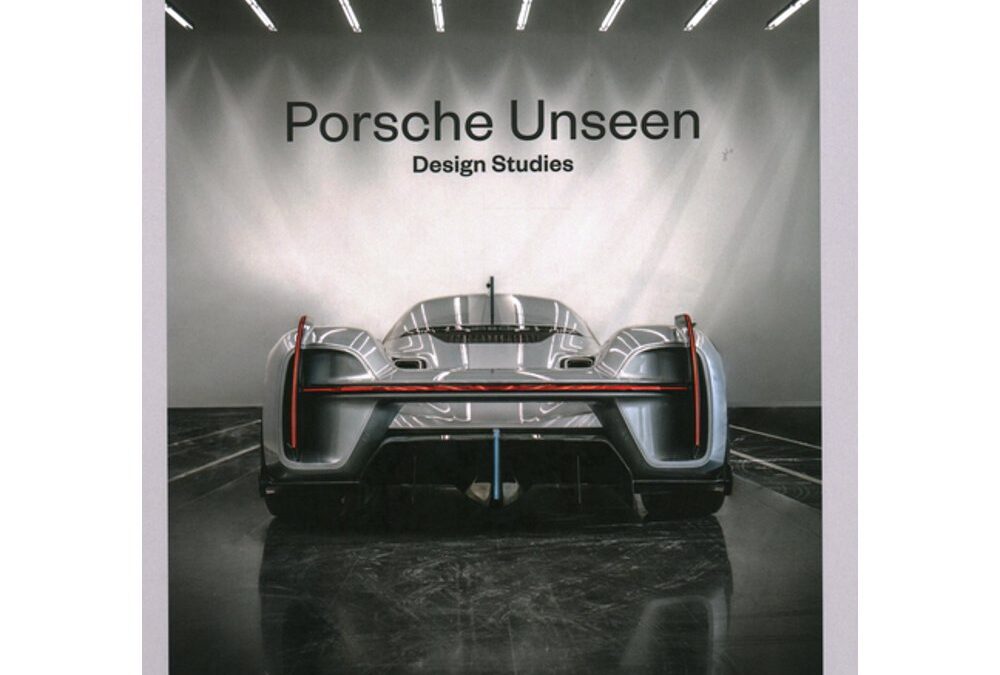
- Porsche design studies from 2005 to 2019, previously kept under wraps and published here for the first time
- An incomparable journey of discovery through the world of Porsche design!
When car companies present studies and prototypes, they allow a glimpse behind the scenes, a vision of what may come in the future. Apart from what is shown during official events and at fairs, there is an overwhelming number of drafts and models that remain hidden from the public for various reasons. This book achieves the impossible: a look at Porsche cars the public never laid eyes on – Porsche Unseen. Stefan Bogner was exclusively allowed to take pictures in the Porsche Design sanctum. The Porsche DNA is recognizable in any of the models shown, but the design is so new and unexpected that it suggests the existence of a parallel universe. A 1-litre Porsche? A coupé-like four seater with 911-looks? Single-seated roadsters with 1950’s flair? Stefan Bogner took photos of all of them – either as models or ready to drive. Jan Baedeker talked with Michael Mauer, Head of Design, and took down the enlightening background information. Join our extraordinary expedition of discovery through the world of Porsche Design! Text in English and German.

















